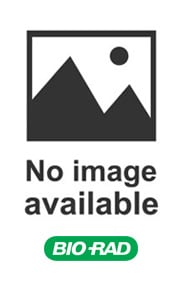CD44 antibody | IM7

Rat anti Mouse CD44
- Product Type
- Monoclonal Antibody
- Clone
- IM7
- Isotype
- IgG2b
- Specificity
- CD44
| Rat anti Mouse CD44 antibody, clone IM7 recognizes CD44, also known as H-CAM, HUTCH and lymphocyte antigen 24 (Ly-24). CD44 is a cell surface receptor for hyaluronic acid, although it can also interact with other ligands such as collagens and matrix metalloproteinases. This protein plays a role in a variety of cellular functions, such as adhesion, lymphocyte activation and lymph node homing. It is also involved in cell migration and plays a role in tumor metastasis. CD44 has many distinct isoforms responsible for its functional diversity. Rat anti Mouse CD44 antibody, clone IM7 recognizes all isoforms of CD44 and has been reported to inhibit a delayed-type hypersensitivity response in vivo and to induce complement-mediated cytotoxicity. |
- Target Species
- Mouse
- Species Cross-Reactivity
-
Target Species Cross Reactivity Human Baboon Cynomolgus monkey Rhesus Monkey Horse Bovine Pig Dog Cat Ferret Mustelid Expected from Sequence - N.B. Antibody reactivity and working conditions may vary between species.
- Product Form
- Purified IgG - liquid
- Preparation
- Purified IgG prepared by affinity chromatography
- Buffer Solution
- Phosphate buffered saline
- Preservative Stabilisers
- <0.1% Sodium Azide (NaN3)
- Immunogen
- Dexamethasone-induced myeloid leukemia M1 cells.
- Approx. Protein Concentrations
- IgG concentration 0.5mg/ml
- Regulatory
- For research purposes only
- Guarantee
- 12 months from date of despatch
Avoid repeated freezing and thawing as this may denature the antibody. Storage in frost-free freezers is not recommended.
| Application Name | Verified | Min Dilution | Max Dilution |
|---|---|---|---|
| ELISA | |||
| Flow Cytometry | 1/20 | 1/50 | |
| Functional Assays | |||
| Immunohistology - Frozen | |||
| Immunohistology - Paraffin | |||
| Immunoprecipitation |
- Flow Cytometry
- Use 10ul of the suggested working dilution to label 1x106 cells in 100ul.
| Description | Product Code | Applications | Pack Size | List Price | Your Price | Quantity | |
|---|---|---|---|---|---|---|---|
| Antigen Retrieval Buffer, pH8.0 | BUF025A | P | 500 ml | Log in | |||
| List Price | Your Price | ||||||
| Log in | |||||||
| Description | Antigen Retrieval Buffer, pH8.0 | ||||||
References for CD44 antibody
-
Lesley, J. et al. (1992) Requirements for hyaluronic acid binding by CD44: a role for the cytoplasmic domain and activation by antibody.
J Exp Med. 175: 257-66. -
Camp, R.L. et al. (1993) CD44 is necessary for optimal contact allergic responses but is not required for normal leukocyte extravasation.
J Exp Med. 178: 497-507. -
Brocke, S. et al. (1999) Antibodies to CD44 and integrin alpha4, but not L-selectin, prevent central nervous system inflammation and experimental encephalomyelitis by blocking secondary leukocyte recruitment.
Proc Natl Acad Sci U S A. 96: 6896-901. -
Morrison, H. et al. (2001) The NF2 tumor suppressor gene product, merlin, mediates contact inhibition of growth through interactions with CD44.
Genes Dev.15: 968-80. -
Mckallip, R.J. et al. (2002) Role of CD44 in activation-induced cell death: CD44-deficient mice exhibit enhanced T cell response to conventional and superantigens.
Int Immunol. 14 (9): 1015-26. -
Lesley, J. et al. (2003) Hyaluronan binding by cell surface CD44.
J Biol Chem. 275: 26967-75. -
Katoh, S. et al. (2003) A role for CD44 in an antigen-induced murine model of pulmonary eosinophilia.
J Clin Invest. 111: 1563-70. -
Rutigliano, J.A. et al. (2008) Screening monoclonal antibodies for cross-reactivity in the ferret model of influenza infection.
J Immunol Methods. 336: 71-7.
View The Latest Product References
-
Ariyoshi, W. et al. (2010) Internalization of aggrecan G1 domain neoepitope ITEGE in chondrocytes requires CD44.
J Biol Chem. 285: 36216-24. -
Martín-Villar, E. et al. (2010) Podoplanin associates with CD44 to promote directional cell migration.
Mol Biol Cell. 21: 4387-99. -
Hartley, A.N. & Tarleton, R.L. (2015) Chemokine receptor 7 (CCR7)-expression and IFNγ production define vaccine-specific canine T-cell subsets.
Vet Immunol Immunopathol. 164 (3-4): 127-36. -
Zhu, C. et al. (2020) Antinociceptive effect of intrathecal injection of miR-9-5p modified mouse bone marrow mesenchymal stem cells on a mouse model of bone cancer pain.
J Neuroinflammation. 17 (1): 85. -
Maeda, S. et al. (2021) NAFLD exacerbates cholangitis and promotes cholangiocellular carcinoma in mice.
Cancer Sci. 112 (4): 1471-80. -
Lara, M.L. et al. (2023) Influence of culture conditions on the secretome of mesenchymal stem cells derived from feline adipose tissue: Proteomics approach.
Biochimie. 211: 78-86.
- Synonyms
- H-CAM
- PGP-1
- RRID
- AB_2076194
- UniProt
- P15379
- Entrez Gene
- Cd44
MCA4703
If you cannot find the batch/lot you are looking for please contact our technical support team for assistance.
Please Note: All Products are "FOR RESEARCH PURPOSES ONLY"
View all Anti-Mouse ProductsAlways be the first to know.
When we launch new products and resources to help you achieve more in the lab.
Yes, sign me up